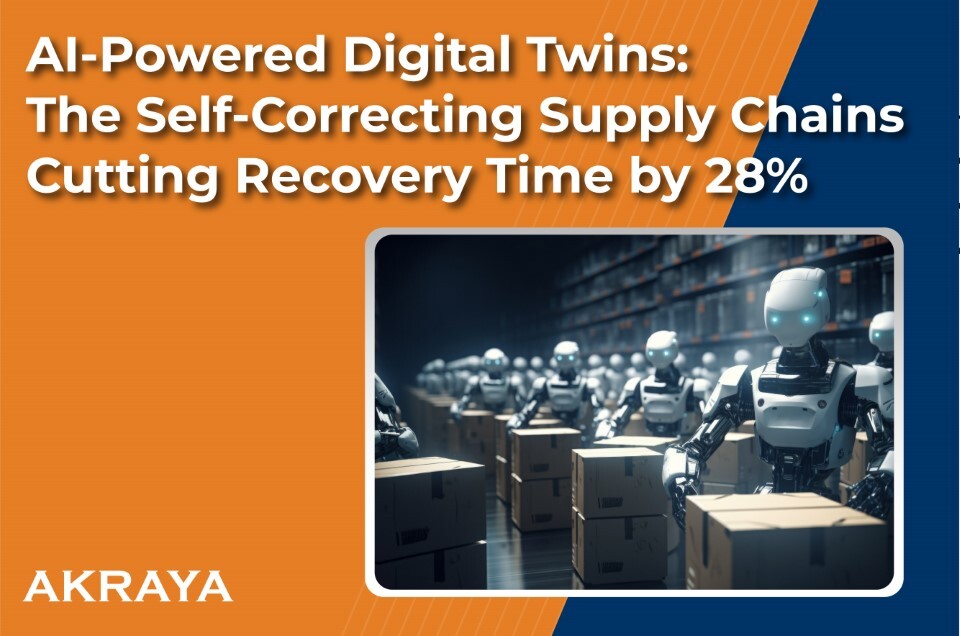Scaling Smarter: The Strategic Advantage of IT Staff Augmentation
Let’s face it—building the right tech team is tough. Project deadlines are tight, skill requirements change overnight, and top talent is harder than...
2 min read
Rinki Yumnam : October 31, 2025

Why Digital Transformation Can No Longer Wait
Supply chains have evolved dramatically. They're no longer about simply moving products from point A to point B. Today, supply chains have to respond to new technologies, unexpected disruptions, and rising customer expectations. Yet a surprising number of companies still rely on spreadsheets, disconnected systems, and manual work.
A digital transformation roadmap bridges these gaps. It brings together technology, people, and processes to make your supply chain more agile, data-driven, and resilient.
A roadmap is more than a list of technology upgrades. It is a strategic plan that defines how digital capabilities, such as automation and analytics, will evolve across your supply chain. It helps leaders prioritize initiatives, align investments with business goals, and ensure that every step delivers measurable value.
A strong roadmap typically focuses on these areas:
Stage 1: Assess Where You Are Today
Start by mapping out your current systems, tools, and workflows. Identify where the bottlenecks exist, whether it is limited real-time data, delayed order visibility, or disconnected ERP systems.
This stage should include:
Stage 2: Define Your Digital Vision and Objectives
A transformation roadmap should directly connect to business goals. Determine whether your objectives are to cut lead times, improve supplier performance, or enhance forecasting accuracy. Define clear outcomes that can be measured in KPIs, not just “go digital” as a vague goal.
Bring in cross-functional leaders early to ensure alignment. Digital transformation initiatives fail when IT departments operate in isolation.
Stage 3: Identify High-Impact Initiatives
Once the vision is clear, prioritize digital initiatives that create immediate and scalable impact. Examples include:
Each initiative should include a business case, projected ROI, and an implementation timeline.
Stage 4: Build Governance and Change Management Models
Even the best technology fails without adoption. Create governance structures that drive accountability, communication, and buy-in.
Your governance plan should include:
Stage 5: Measure, Adapt, and Scale
Digital transformation is not a one-time project. It is a continuous journey. Establish a performance dashboard to track metrics such as cost savings, process efficiency, and on-time delivery rates.
As early initiatives show results, scale them across business units. Keep refining your roadmap. Every improvement strengthens your supply chain.
Expected Outcomes: What a Digitally Transformed Supply Chain Delivers
When executed effectively, a transformation roadmap leads to:
Best Practices for Building Your Roadmap
At Akraya, we help organizations build high-performing tech teams that power digital transformation from the ground up. Whether it is cloud migration, automation, or analytics, our managed teams can help you achieve measurable outcomes faster.
Explore how Akraya can support your next digital supply chain initiative.

Akraya transformed application infrastructure into a $900M+ revenue accelerator, enabling scalable growth and future-proofing against next-gen demands.

Akraya’s talent-on-demand strategy transformed merchandising into a predictive revenue engine, driving $8.4B in new sales and enabling the most responsive omnichannel system in the industry.

Let’s face it—building the right tech team is tough. Project deadlines are tight, skill requirements change overnight, and top talent is harder than...

AI Powered Digital Twins: The Self-Correcting Supply Chains Cutting Recovery Time by 28 Percent

How to Scale a Team-in-a-Box: From Pilot to Full Deployment